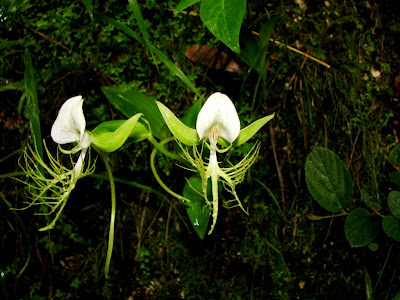Peristylus stocksii (Hook.f.) Kraenzl.

Peristylus stocksii (Hook.f.) Kraenzl. Family: Orchidaceae . Description: A terrestrial (ground) orchid. Roots / Tuberoids: The plant possesses 1–2 ellipsoid tuberoids . Roots are numerous, vermiform , and cylindric. Leaves: Dark green, glabrous , obovate-elliptic , with a wavy margin, acute at the apex, and sheathing at the base. Flowers: Dull green, secund (arranged on one side), and lax on a twisted spike that is 7.5–15 cm long. Floral bracts are longer than the ovary. Dorsal sepal forms a hood with the petals over the column. Labellum (lip) is dull green, shorter than the sepals, trilobed, and clawed. Midlobe is longer than the lateral lobes, straight, and points downwards. Spur is green, clavate (club-shaped), and smaller than the ovary. Flowering and Fruiting: July–August. Distribution (World & India): Global: The genus Peristylus is Indo-Malesian and contains 60–108 species. India: This species is endemic to ...
%20Ormerod.jpg)
.JPG)

.JPG)

